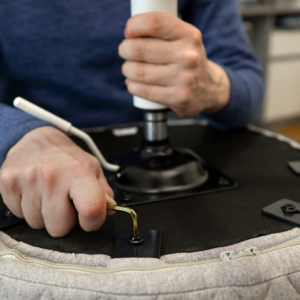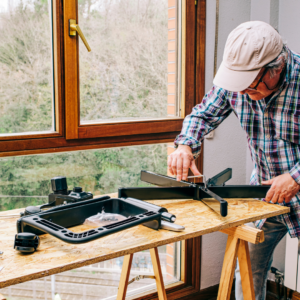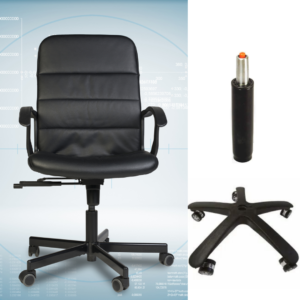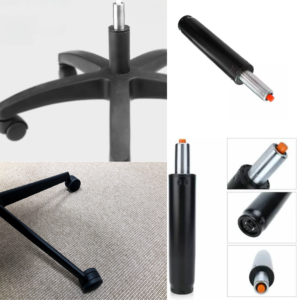Can You Fix Office Chair That Won’t Stay Up? A Comprehensive Guide
Are you frustrated with an office chair that won’t stay up? This common problem can significantly impact your comfort and productivity at work. Fortunately, in many cases, you can fix office chair that won’t stay up without having to replace the entire chair. In this comprehensive guide, we’ll explore the causes of this issue, provide step-by-step solutions, and offer tips to prevent future problems.
Understanding Why Your Office Chair Won’t Stay Up
So, before we dive into how to fix office chair that won’t stay up, it’s essential to understand the underlying causes. Typically, this issue stems from problems with the pneumatic cylinder, which is responsible for adjusting and maintaining the chair’s height. Several factors can contribute to a malfunctioning pneumatic cylinder:
1. Wear and tear: Over time, the seals within the cylinder can degrade, leading to air leakage.
2. Damage: Physical impact or excessive weight can damage the cylinder’s components.
3. Dirt and debris: Accumulation of foreign particles can interfere with the cylinder’s operation.
4. Manufacturing defects: In some cases, the cylinder may have been faulty from the start.
Guide on How to Fix Office Chair That Won’t Stay Up

Now that we understand the potential causes, let’s explore how you can fix office chair that won’t stay up. We’ll start with the simplest solutions and progress to more complex repairs.
1. Inspect the Chair
First and foremost, conduct a thorough inspection of your chair. Look for any visible damage, loose parts, or signs of wear. This initial assessment can help you identify the root cause and determine the best course of action.
2. Tighten All Connections
Sometimes, the issue isn’t with the cylinder itself but with loose connections. Therefore, use a wrench or pliers to tighten all visible nuts and bolts, especially those around the base and seat of the chair.
3. Clean the Cylinder
Dirt and debris can sometimes interfere with the cylinder’s operation. Consequently, clean the exposed part of the cylinder with a damp cloth, removing any visible grime or particles.
4. Lubricate the Cylinder
In some cases, a lack of lubrication can cause the cylinder to stick. Thus, apply a silicone-based lubricant to the exposed part of the cylinder, working it in by raising and lowering the chair several times.
5. Replace the Gas Lift
If the above steps don’t resolve the issue, you may need to replace the gas lift (another term for the pneumatic cylinder). Here’s how:
a. Flip the chair upside down.
b. Remove the base by tapping it with a rubber mallet.
c. Remove the plastic skirt covering the cylinder.
d. Use a pipe wrench to remove the old cylinder.
e. Insert the new cylinder into the chair mechanism.
f. Reattach the base and plastic skirt.
6. Use a Cylinder Repair Kit
As an alternative to full replacement, you can use a cylinder repair kit. These kits typically include a new piston and seal, allowing you to fix office chair that won’t stay up without replacing the entire cylinder.
7. Seek Professional Help
If you’re not comfortable performing these repairs yourself, or if the issue persists after attempting these solutions, consider seeking help from a professional furniture repair service.
Preventing Future Issues: Maintenance Tips for Your Office Chair

After you’ve managed to fix office chair that won’t stay up, you’ll want to prevent the problem from recurring. Here are some maintenance tips to keep your office chair in top condition:
1. Regular Cleaning: Vacuum or wipe down your chair regularly to prevent dirt and debris buildup.
2. Weight Distribution: Avoid placing excessive weight on one side of the chair, as this can strain the cylinder.
3. Gentle Usage: Refrain from dropping into the chair or using it as a stepstool, as these actions can damage the cylinder.
4. Periodic Inspection: Regularly check for loose parts or signs of wear and address issues promptly.
5. Lubrication: Apply lubricant to the cylinder and other moving parts every few months.
When to Consider Replacement
Although you can often fix office chair that won’t stay up, there may come a time when replacement is the best option. Consider replacing your chair if:
1. The chair is very old and showing multiple signs of wear.
2. Repairs are becoming frequent and costly.
3. The chair no longer provides adequate support or comfort.
4. You’ve outgrown the chair in terms of your body size or work requirements.
Choosing a New Office Chair

If you decide to replace your chair, keep these factors in mind:
1. Ergonomics: Look for a chair with good lumbar support and adjustable features.
2. Quality: Invest in a well-made chair to avoid frequent issues.
3. Warranty: Choose a chair with a solid warranty to protect your investment.
4. Reviews: Read user reviews to gauge long-term satisfaction and durability.
Conclusion: Empowering You to Fix Office Chair That Won’t Stay Up

In conclusion, a sinking office chair doesn’t have to mean the end of your beloved seat. With the right knowledge and tools, you can often fix office chair that won’t stay up, saving money and reducing waste. By understanding the causes, following our step-by-step guide, and implementing preventive maintenance, you can extend the life of your office chair and ensure a comfortable, productive work environment.
Remember, while it’s often possible to fix these issues yourself, don’t hesitate to seek professional help if you’re unsure or if the problem persists. Your comfort and safety should always be the top priority.
By taking good care of your office chair and addressing issues promptly, you can enjoy a comfortable, supportive seat for years to come. Whether you’re working from home or in a traditional office setting, a well-maintained chair is an investment in your productivity and well-being.
